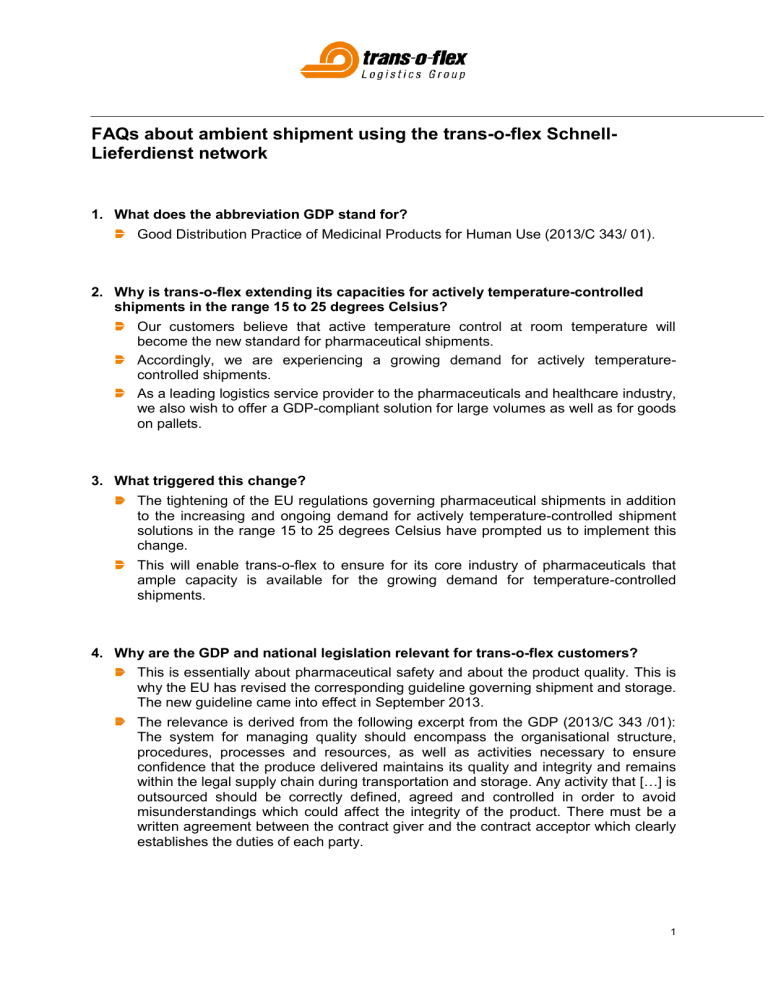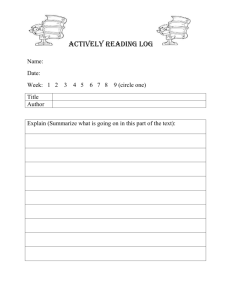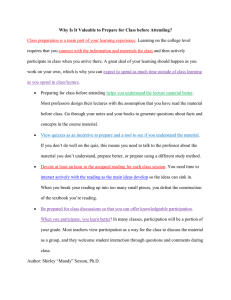FAQs about ambient shipment using the trans-o

FAQs about ambient shipment using the trans-o-flex Schnell-
Lieferdienst network
1. What does the abbreviation GDP stand for?
Good Distribution Practice of Medicinal Products for Human Use (2013/C 343/ 01).
2. Why is trans-o-flex extending its capacities for actively temperature-controlled shipments in the range 15 to 25 degrees Celsius?
Our customers believe that active temperature control at room temperature will become the new standard for pharmaceutical shipments.
Accordingly, we are experiencing a growing demand for actively temperaturecontrolled shipments.
As a leading logistics service provider to the pharmaceuticals and healthcare industry, we also wish to offer a GDP-compliant solution for large volumes as well as for goods on pallets.
3. What triggered this change?
The tightening of the EU regulations governing pharmaceutical shipments in addition to the increasing and ongoing demand for actively temperature-controlled shipment solutions in the range 15 to 25 degrees Celsius have prompted us to implement this change.
This will enable trans-o-flex to ensure for its core industry of pharmaceuticals that ample capacity is available for the growing demand for temperature-controlled shipments.
4. Why are the GDP and national legislation relevant for trans-o-flex customers?
This is essentially about pharmaceutical safety and about the product quality. This is why the EU has revised the corresponding guideline governing shipment and storage.
The new guideline came into effect in September 2013.
The relevance is derived from the following excerpt from the GDP (2013/C 343 /01):
The system for managing quality should encompass the organisational structure, procedures, processes and resources, as well as activities necessary to ensure confidence that the produce delivered maintains its quality and integrity and remains within the legal supply chain during transportation and storage. Any activity that […] is outsourced should be correctly defined, agreed and controlled in order to avoid misunderstandings which could affect the integrity of the product. There must be a written agreement between the contract giver and the contract acceptor which clearly establishes the duties of each party.
1
5. What are the advantages of the active temperature control compared with passive temperature control using freezer packs, for example?
With actively temperature-controlled shipments, all goods are constantly handled and shipped at the ideal temperature for the particular goods.
There is no need for sophisticated temperature packaging solutions or their return and, what is more, the safety is enhanced, particularly for shipments over the weekend.
Furthermore, the temperature documentation is available to access online after delivery. No evaluation of temperature loggers is necessary.
6. How does trans-o-flex ensure active temperature control as regards the operations within the Schnell-Lieferdienst network?
The core element is our new, full-coverage and GDP-compliant network, which, for actively temperature-controlled shipment at 15 to 25 degrees Celsius, is based on a combination of special refrigerated vehicles and conventional vehicles with actively temperature-controlled transport capacities (thermos boxes).
We use special refrigerated vehicles from the outset in our scheduled service as well as for the collection and delivery of pallets that are to be transported at 15 to 25 degrees Celsius. Apart from this, trans-o-flex is committed to using certified and actively temperature-controlled transport capacities (thermos boxes permanently installed in vans). We are also highly versatile in this regard and, according to the requirements, use different sized transport capacities (box types).
Our solution for handling is equally scalable. We are starting out in October 2014 initially with one fully air-conditioned central hub (Kassel). Further handling depots will gradually be upgraded to be fully air-conditioned.
From October 2014, the temperature during handling will be continuously monitored and documented at all the sites. If any goods remain beyond transhipment, e.g. at the weekend, these will be moved into appropriately temperature-controlled rooms.
The observance of the conditions prescribed by the new EU GDP guideline will be monitored and documented.
7. How will the right temperature (quality) be ensured in the Schnell-Lieferdienst network?
Firstly, from the outset we will be using air-conditioned handling centres, actively temperature-controlled vehicles and vehicles with actively temperature-controlled transport capacities (boxes).
Secondly, the observance of the temperature range will be monitored and documented.
It is possible to display a continuous temperature graph on the basis of the temperature measurements of each room a package passes through.
A two-stage system is available for customers who use active temperature control at
15 to 25 degrees Celsius. We use a traffic light system to gain a quick overview. Our consignment information system (track & trace) also indicates whether or not the temperature has been kept to. For customers who require additional information, we also offer temperature graphs that document the profile of the temperatures to which their package has been exposed during transit.
2
8. At which intervals is the temperature measured and transmitted both at the sites and in the vehicles?
The temperature is constantly recorded. The average of the last quarter-hour is transmitted every 15 minutes.
For this purpose, all the actively temperature-controlled vehicles, the thermos boxes and depots have been equipped with corresponding temperature sensors and new telematics software. This allows the current temperature data to be transmitted from each vehicle and each depot automatically every 15 minutes to our central computer.
This enables us to document at all times the observance of the temperature for our customers.
In the event of temperature deviations, a central service office at trans-o-flex is immediately alerted (alarm message), thus allowing the scheduling department at the individual sites to intervene immediately.
9. Does the Schnell-Lieferdienst network ensure that the goods of customers who use the trans-o-flex ambient service are always handled and shipped at 15 to 25 degrees Celsius?
From October 2014, the temperature will be continuously measured and documented at all the sites. Customers who use our actively temperature-controlled service also have the additional option of being able to access the temperature graphs, which document the profile of the temperatures to which their package has been exposed during transit. As such, our processes and the temperature conditions to which the pharmaceuticals are exposed during transit and handling are completely transparent for our customers.
10. How will trans-o-flex deal with fluctuations in volume?
Customers who have already commissioned our actively temperature-controlled service will still be able to rely on their consignments – even in case of volume fluctuations – being shipped and delivered in actively temperature-controlled conditions.
Generally speaking, our capacities are geared to the requirements of our customers.
This entails trans-o-flex undertaking the necessary preliminary measures so as also to be able to map future requirements. It is both logistically and economically necessary in this regard that the development is gradual, where the growth in volume must follow the development of the network. No provider can afford to operate in the long run without a certain minimum level of capacity utilisation. For this reason, it is necessary, particularly in the start-up phase, to pursue a smart network development strategy, where the quality of the shipment is ensured, but at the same time investments and shipment quantities are correctly balanced with each other.
Thanks to a combination of various vehicle types and equipment configurations, trans-o-flex has achieved an optimum balance of investment costs, consignment volume and necessary coverage for the launch of actively temperature-controlled shipments in the Schnell-Lieferdienst network.
In case of further increases in volume, it is important that our customers inform us as early as possible as to what volume of goods is or is not to be shipped actively temperature-controlled and as from when.
3
11. What additional services are offered with the offering of active temperature control in the Schnell-Lieferdienst network?
It is possible to take advantage of various additional services provided by Schnell-
Lieferdienst in the conjunction with active temperature control, such as C.O.D
Service, Time-definite Delivery, etc. (see graphic for details)
Permissible package dimensions and weights
Optional additional services from trans-o-flex ambient
Parcel
Parcel dimensions max.:
L 60 x B 40 x H 40 cm
Weight max.: 25 kg
Pallet
Pallet height max.: 160 cm
Weight max.: 800 kg trans-o-flex plus 12 noon trans-o-flex Saturday Service trans-o-flex Island Service trans-o-flex Hazardous Goods (except classes 1 & 7) trans-o-flex HomeCare trans-o-flex medipack trans-o-flex Evening Service trans-o-flex Cash-on-Delivery trans-o-flex Confidential trans-o-flex Time-definite Delivery trans-o-flex co2de green trans-o-flex Premium Delivery PHAGRO
International Shipments / EUROTEMP
*by arrangement
12. Do the actively temperature-controlled consignments have to be handed over separately to Schnell-Lieferdienst?
Yes, in order to ensure GDP-compliant shipment it is important to remember when handing over the goods that the pharmaceuticals to be shipped under actively temperature-controlled conditions must be handed over separately to trans-o-flex.
It is also important to ensure that the consignments are handed over to trans-o-flex under actively temperature-controlled conditions (between 15 and 25 degrees
Celsius).
In addition, it is important to ensure that the ambient consignments (15 to 25 degrees
Celsius) are labelled prior to being handed over to trans-o-flex with corresponding
“trans-o-flex ambient stickers”.
13. Do the actively temperature-controlled consignments (15 to 25 degrees Celsius) have to be specially labelled prior to being handed over to trans-o-flex?
Yes, ambient consignments (15 to 25 degrees Celsius) must be labelled prior to being handed over to trans-oflex with corresponding “trans-o-flex ambient stickers”.
For this purpose, the corresponding stickers will be supplied in ample quantities by trans-o-flex to ambient customers.
4
*
*
*
14. What happens with non-pharmaceutical consignments that do not actually require active temperature-controlled shipment?
Such goods are still shipped in the standard system (without temperature control). In other words, nothing changes for non-pharmaceutical customers.
Neither do these customers receive any temperature graphs.
5



